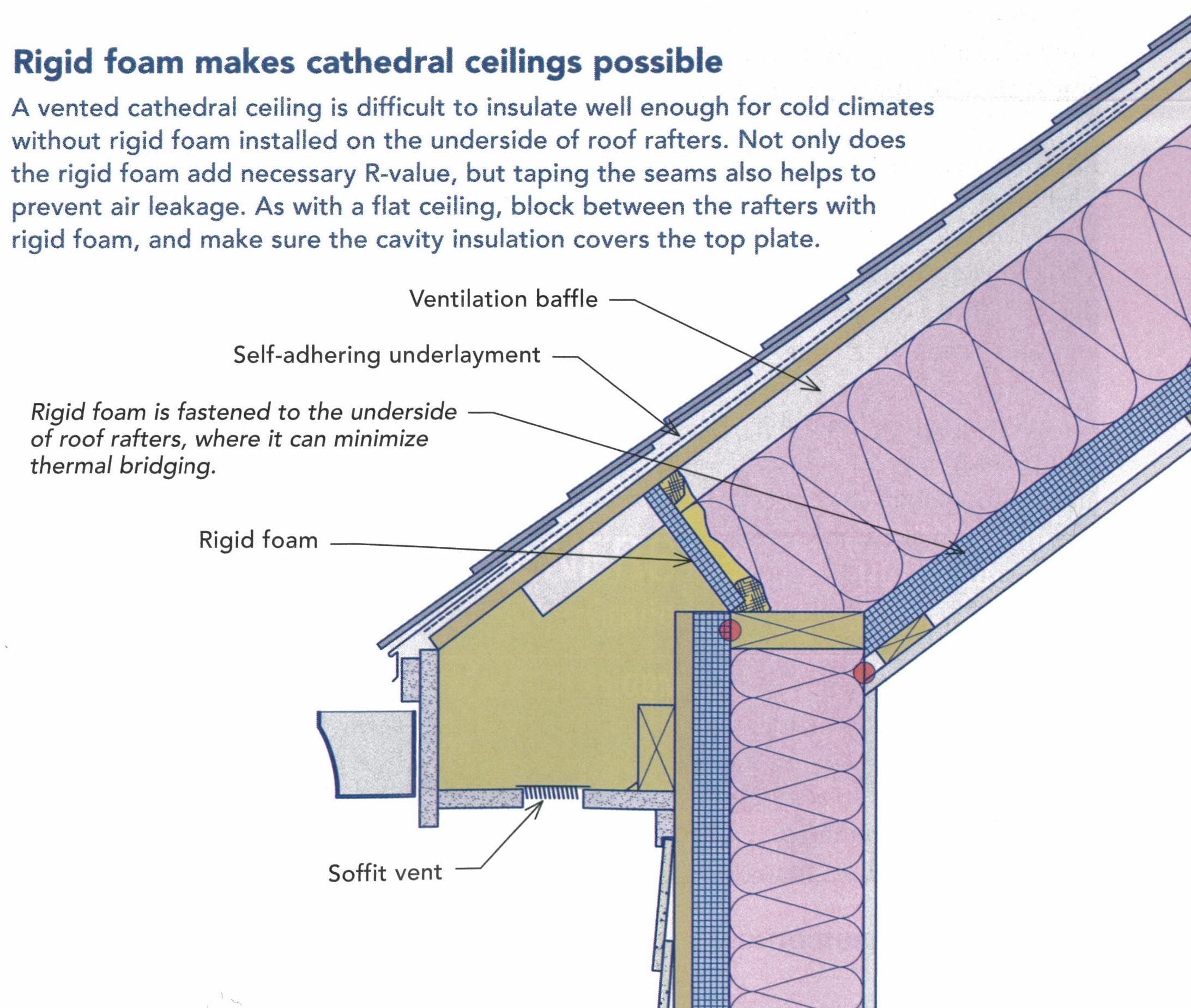Unvented Attic Ceiling Assembly

The requirement that there be no vapor retarder on the interior ceiling of the unvented attic assembly is primarily intended to avoid trapping warm moist air in the attic area in warm humid climates not an issue in washington but also to make it clear that a vapor retarder is not needed at the ceiling level for the unvented attic assembly application anywhere exceptions 5a and 5c will be used for spray foam application directly to the underside of the roof sheathing.
Unvented attic ceiling assembly. Where wood shingles or shakes are used a minimum inch vented air space separates the. This document provides a brief description of different types of unvented roof assemblies and the benefits of unvented roof construction. The key to creating an unvented roof assembly is to keep the roof deck the principle condensing surface in roof assemblies sufficiently warm throughout the year such that condensation will not occur or to prevent interior moisture laden air from accessing the roof deck. Four options for building an unvented roof assembly.
However architects of these compact roof assemblies must consider vapor permeance and arrangement of the materials to produce acceptable hygrothermal performance and low risk of condensation in the resulting conditioned attic space. Low slope and steep slope unvented roof systems i e. This is because the top floor ceiling is no longer the air barrier for the house the spray foam at the roof deck underside in the attic is the air barrier. In an unvented attic penetrations through the ceiling directly below the attic do not need to be air sealed.
You can install all of the insulation above the roof sheathing but the foam has to be thick enough to meet minimum code requirements for ceiling r value. Unventilated attics are common where roof assemblies are complex and it s difficult to create a sealed ceiling plane. No interior vapor retarders are installed on the ceiling side attic floor of the unvented attic assembly 2009 irc. These assemblies are created by eliminating ventilation openings and moving the thermal moisture and air control boundaries to the plane of the roof deck.
Install insulation along the underside of the roof deck of an unvented attic rather than on the ceiling deck of a vented attic for either of two reasons. Rigid foam above roof sheathing. The rigid foam will be fairly thick see sidebar how much insulation. Insulation and air barrier are applied directly to the underside of the roof deck are common in applications where designers are seeking cost effective and energy efficient roof assemblies.
The unvented attic space is completely contained within the building thermal envelope 2. No interior class i vapor retarders are installed on the ceiling side attic floor of the unvented attic assembly 2012 irc 3.














































